Sit down with Joel Salatin and me as we discuss methods for increasing the profits from your homestead, different methods for earning a living from your homestead, and ways to increase production (even on a small homestead).

I’ve talked a lot about whether homesteading saves you money, or how to homestead, make money and do everything else, and I’ve also talked about how to use your homestead skills to save money (especially during the holidays), plus ways to earn cash from your farm.
In this post, we’re talking about maximizing your homestead not only for production but for profit. Here is another podcast with Joel where we are talking about mRNA in livestock.
This may just mean you’re increasing what you’re providing for your family, but it could also mean, if you’d like to earn a profit from your homestead, learning different methods for earning money from what you’re already doing.
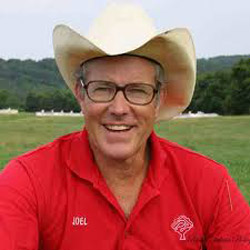
In today’s episode of the Pioneering Today Podcast (episode #308), I’m sitting down with Joel Salatin who has helped our family come up with a game plan to expand our food production and get us to where we can not only improve our own farming practices but to also provide food to our local community.
Joel is the grandfather of the modern homesteading movement, especially in regards to regenerative agriculture and spreading the word even beyond the homesteading community for this way of living.
Joel’s motto is “fill it up”. Meaning, you’re not ready for more until you’ve filled up the existing space that you have.
Table of Contents[Hide][Show]
How to Increase Profit on the Homestead
Before thinking you need more acreage (which is exactly where my husband and I were before we went to the Homesteader’s of America Conference last month) start brainstorming what you can do to stack additional enterprises upon what you’re currently doing.

Add More Livestock
Joel shared with us that we could, using permaculture practices, raise 3,000 broiler chickens (worth $15-$20 each) on our 6 acres while renewing our land and gross about $45,000.
I’m not sure we’re quite ready for this type of infrastructure, but if this is where you are, it’s definitely worth considering!
If raising and selling chickens isn’t of interest, there are always turkeys, you could fit about 500-1,000 laying hens on 6 acres, you can start keeping honey bees, or even turn that pasture land into more garden space (which we did by adding an additional garden space that you can see in this video!).
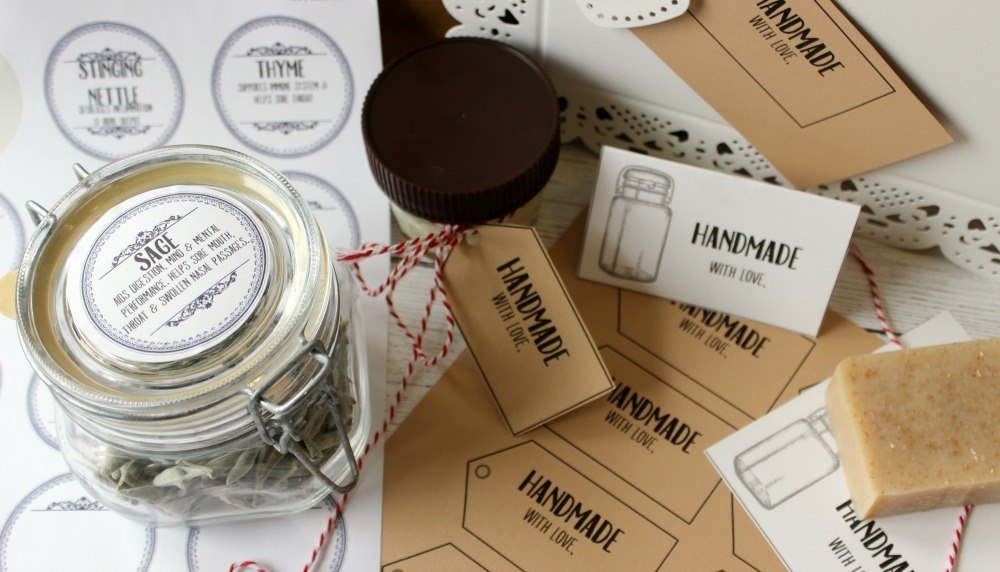
Make a Sellable Product
Furthermore, Joel talks about taking the food or livestock you’re growing/raising and turning it into a sellable product.
So raising chickens and growing cucumbers could turn into selling chicken pot pies and pickles. Now we’re turning what we’re growing/raising into food that we’re selling.
If learning how to sell a homestead product on social media without a website, email list, or fancy sales page is something you’re interested in, I’m doing a FREE training series with Anne of All Trades, 3 Days to Sales: How to Effectively Sell Your Product On Social Media, snag your seat!
Farm Tours
Another idea that Joel shared was to open up your homestead for farm tours, inviting people onto your property to see how you’re raising and growing your food. The day could turn into an evening where you serve them a home-cooked farm-style meal and have a bluegrass band playing music.
All of a sudden, you’re charging people $50-$100 for a full-day experience, which in turn could earn you $5000 or more for one day.
We’re considering doing this next spring (2022) so if you’d be interested in coming to our homestead for not only a tour, but hands on classes, let me know!
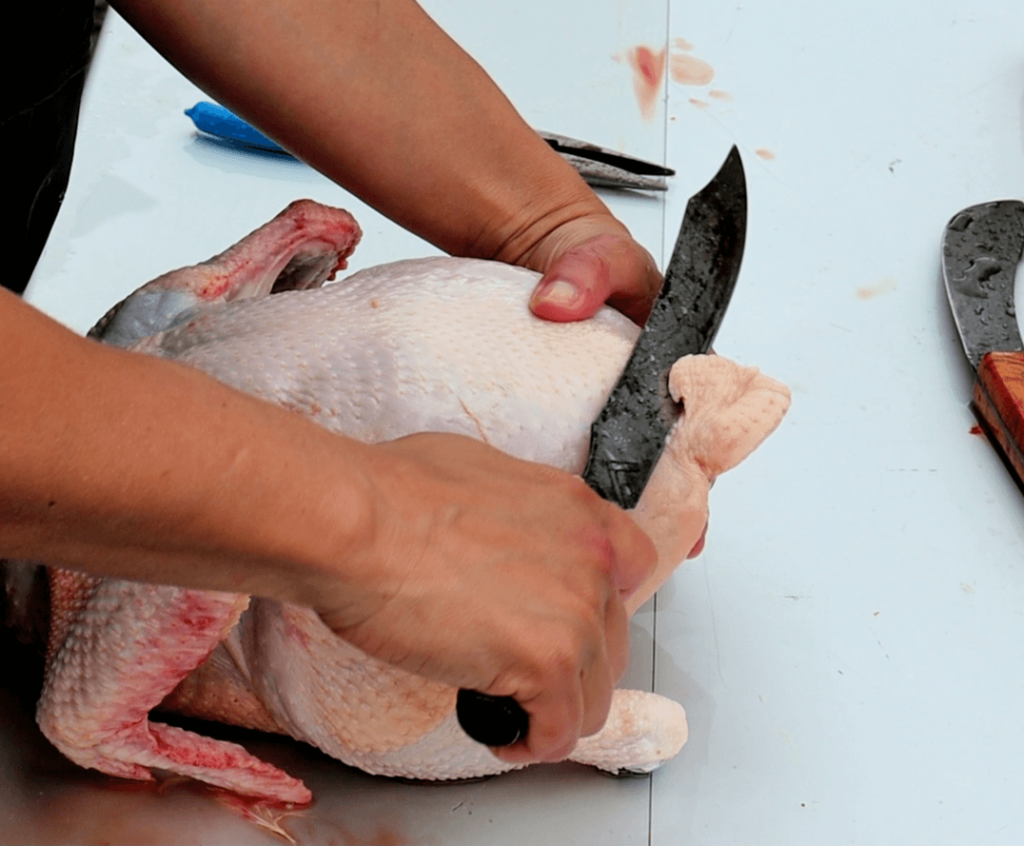
Learning/Teaching Experiences
One idea I’ve had is to host a chicken butchering day where people can come and learn how to butcher their own chickens. There would be a fee for the class, but at the end of the class, they’d be able to take home their chicken for free.
Certainly, this type of learning experience isn’t limited to meat birds, you could teach all sorts of homesteading skills from how to raise meat chickens, how to raise backyard egg-laying hens, how to raise pigs, how to raise grass-fed beef, etc.
Licensing & Permits
Before you jump into producing goods on your land for profit, it’s good to know what it will take to not only process the animals, but what special licensing or permits are required.
Joel suggests looking into the Federal Exemption PL90-492 (Producer/Grower Exemption) which allows you to raise and sell up to 20,000 chickens per year without inspection.
That doesn’t necessarily mean you won’t get a visit from an inspector, but it means you don’t have to have someone on the premises during processing. They’ll usually want to stop by to make sure you’re working in a clean, safe environment.
Some states are more strict than others, so it’s good to know what your state requires before jumping in with both feet.
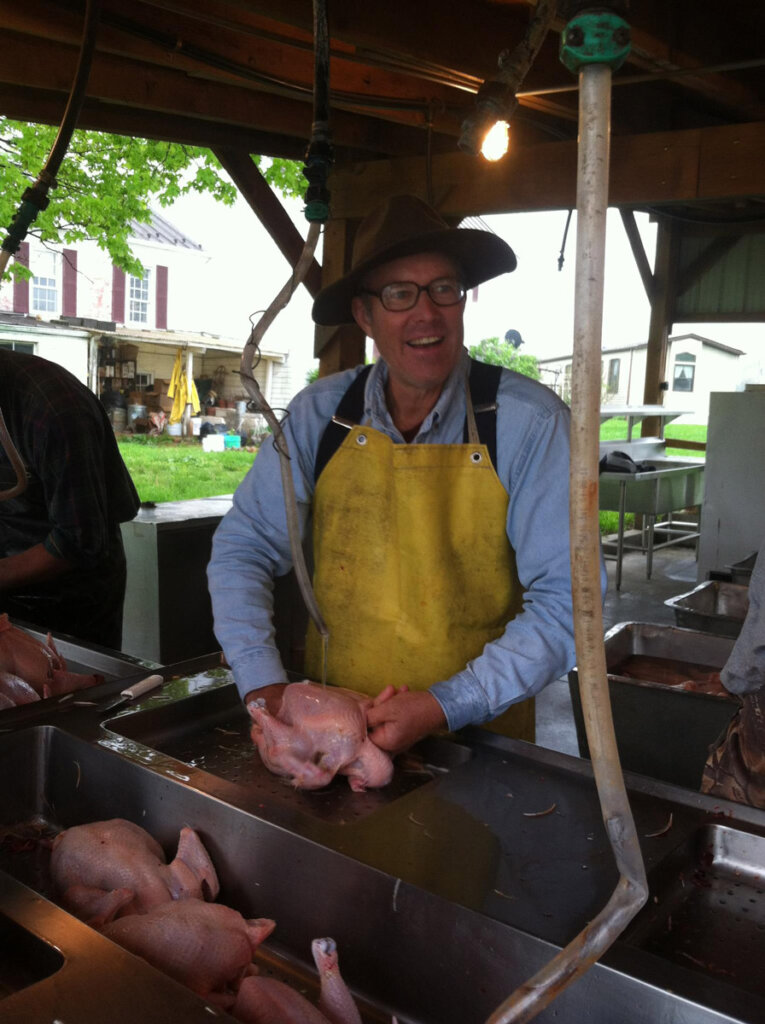
Time Commitment
Raising animals and butchering them yourself is a time commitment, one you should know about ahead of time, especially if you’re working another day job as my husband and I do (this blog, my YouTube channel, and The Pioneering Today Academy are all my full-time job) and would need to find additional time for processing and selling.
For example, Joel and his wife can process 50 birds per hour. For three days every three weeks, they process 200 birds, earning roughly $3000 per day of processing. In this podcast episode, Joel lays out what a typical processing day looks like for him and his wife, but everything is wrapped up by about 4 pm (although he does start early!).
Joel says the trick to success is having good efficient equipment (like an automatic scalder and pickers) and having the skills to do it.
The weak links are always the catch to having a quick productive day. If you’re inviting friends to come help butcher 200 chickens, that may slow up the processing just a bit. So decide if it’s a “teaching” day or a “production” day and you’ll be fine.
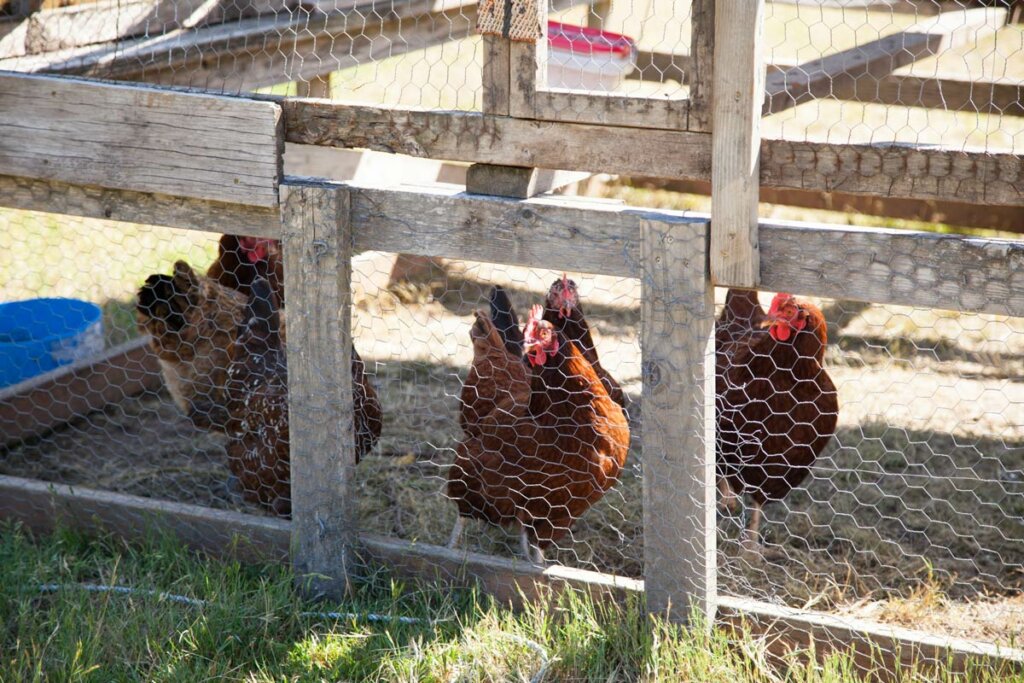
Start Small
Joel also recommends starting on a smaller scale before jumping into larger numbers as mentioned above. Don’t jump right off raising 200 meat chickens expecting to raise them, butcher them, and sell them. Just start raising and selling 25 or more and sell them to friends and family, or by word of mouth.
By the time you get to a level where you’ll need permits or government involvement, you’ll know whether or not this is an avenue of business that you want to continue with.
Joel is also actively looking for loopholes that bypass the government. In his words, you can give your neighbor a bale of hay, but the minute you charge them money for it, you’re not in compliance with the law.
I know I’m not the only one who thinks this is ridiculous because Joel does, too, and he’s actively working on ways to circumvent this.
One way is through the Rogue Food Conference where Joel and a few other team members are bringing together the best circumvention ideas and practitioners in the country to share their ideas and loopholes for people to be able to transact business in their communities that circumvent the regulatory oversight.
Value Adding to Increase Profit
When Joel and his wife first started raising, butchering and selling chickens they only sold them as fresh whole birds. They didn’t freeze them, or piece them out.
After so many years of clients asking them to part their chickens out (saying they’d buy more chicken if it was already cut up and they could just buy boneless, skinless chicken breast, or wings, etc.) they did so. Without adding to the number of chickens they sold per year, they actually increased their annual revenue by $20,000, basically doubling the value of those $15 chickens that were pieced out.
Joel mentioned they also don’t differentiate their prices the same way grocery stores might. The prices of boneless skinless breasts to legs and thighs are much different (keep reading for Joel’s pricing structure).
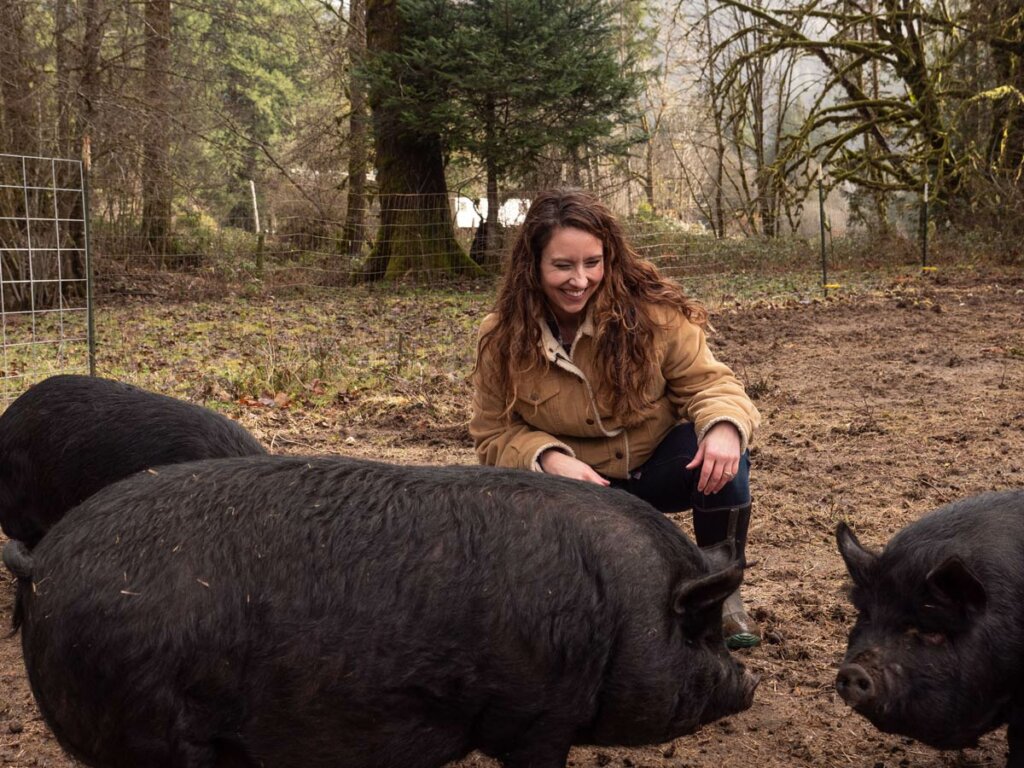
Farm-Raised vs. Store Bought
One of the things, in today’s culture, is this idea that farm-raised meat (whether it’s poultry, beef, pork, etc.) has a flavor profile so different than what you buy in the grocery store and the end product of correctly raised/fed farm-raised meat is much healthier. Beef raised on only grass and chickens allowed to free-range and peck for bugs taste so much better and have much better nutrition.
Therefore, the price for these should be higher than what you pay at a grocery store. Is it possible to support local farmers and stay within a budget?
If you’re looking to buy high-quality meat, raised correctly, at better prices, you might need to consider buying in bulk. It’s when buying in bulk that you’ll start to match what you might pay in the grocery store, only the product is much better for you.
It’s also important to remember that when buying in bulk the price/pound is for the entire animal. That means for beef, you’ll be paying the same amount per pound for ground beef as you are for ribeye steaks. For chickens, you’re paying the same amount for chicken legs as you are chicken breast. For pork, you’re paying the same amount for ground pork as you are pork chops, etc. So the savings may not seem as huge on some cuts, but overall the savings are huge.
Likewise, Joel shared his pricing for chickens, because it’s based on manual labor, they price out their legs/thighs at about $5/lb versus $14/lb for their boneless skinless breast. Their thought was they needed to cover the cost of the whole bird at the risk of people only wanting to buy the breast in case no one wanted to buy the bottom portion of the bird.
Again, Joel sells the whole bird for about $15, so you can see how, if you’re willing to cut it up or piece it out yourself, the savings are greater.
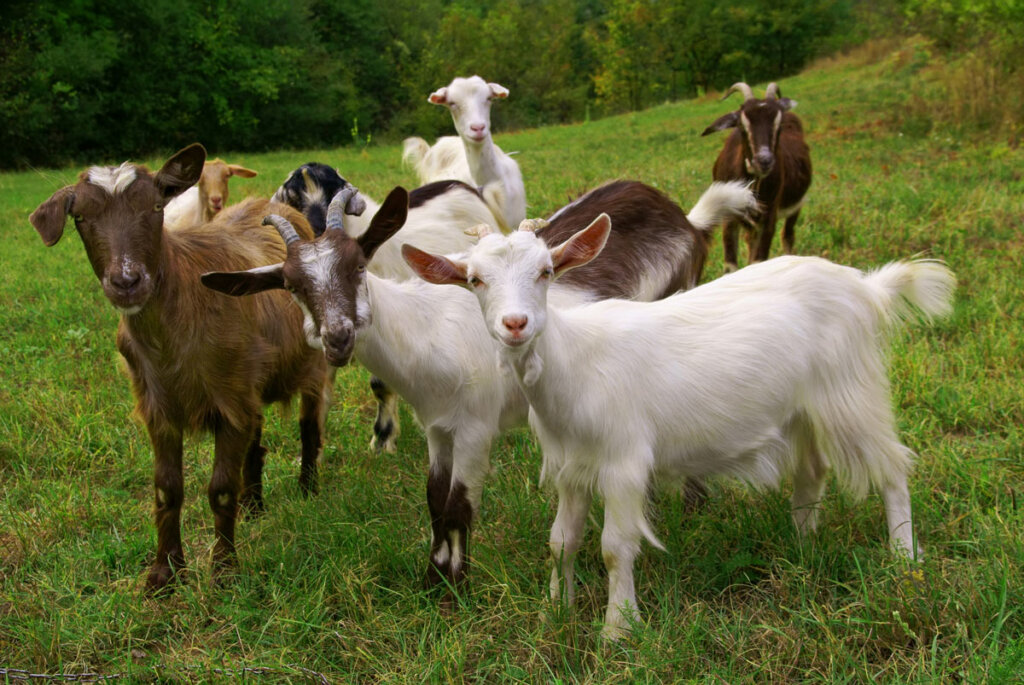
Sheep vs. Goats
I’ve been wondering lately about adding another animal to our farm. We currently raise cows, pigs and both meat and egg-laying chickens, but we felt like we needed something to help us maintain our land a bit better.
Joel shared the pros and cons of sheep and goats, mentioning that both will eat more thorny plants which cows don’t. However, a goat is a browser, meaning it will eat 70% of its food from shoulder height and above. Whereas a sheep is a grazer and will eat 70% of its food from the ground (more like a cow).
However, goats are much harder to keep inside a fenced area. The saying goes, “if a fence won’t hold water, it won’t keep in a goat”, so you need to consider your area, neighbors, etc. when planning on keeping goats.
Goats also don’t need to be moved as often as sheep because they’re not grazing the ground as much. Sheep need to be moved more frequently to avoid over-eating grass (which we’ll discuss in the next part of this post) and to avoid eating where they just pooped.
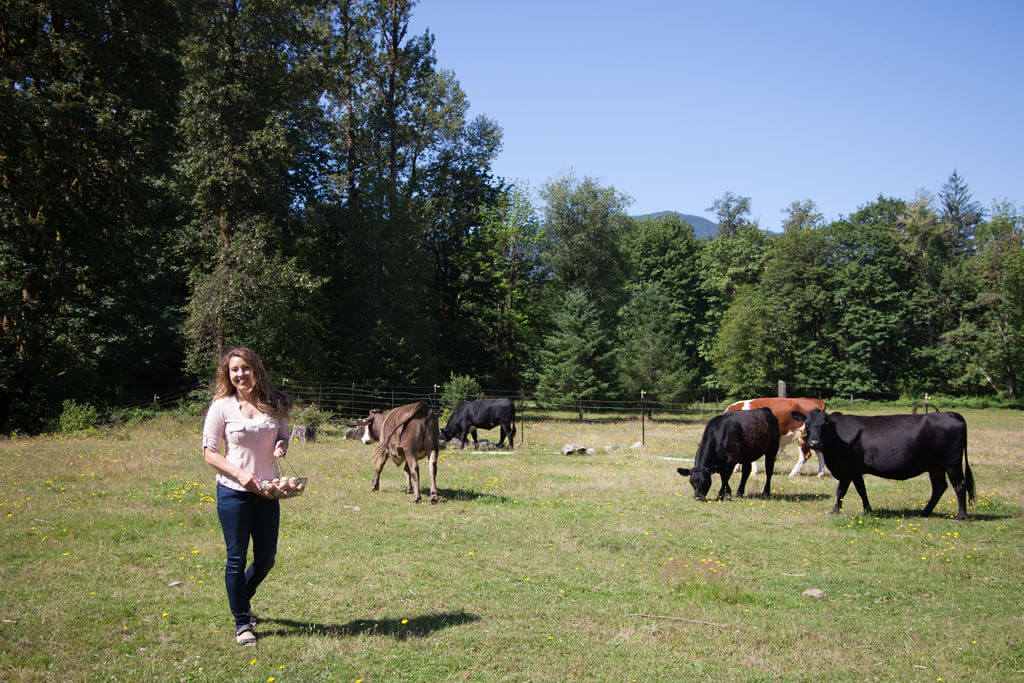
Rotating Cows for Maximum Pasture Production
“Change the management, change the vegetation.” This is what Joel told me when I mentioned that I was curious if we needed to rehabilitate our pasture and keep the cows off it for a time in order to restore the land. His take was much more practical and makes perfect sense.
Before talking with Joel, we had our 6 head of cattle on 3 acres split into 1-acre parcels and were rotating them every 2-3 weeks. Our issue was that our grass and clover just weren’t growing back fast enough for the size of our herd. They also weren’t eating down all the weeds, so we’d end up with little grass and lots of weeds.
Joel’s suggestion was to put the 6 cows in a spot that will feed them for one day. What this means is that they stop re-biting the new growth as it begins to come up. It also means, because they’re only left to eat what’s available, they’ll eat down the weeds as well instead of foraging for those tiny shoots of grass.
André Voisin calls this the law of the second bite. The problem with cows eating the tiny shoots of grass is that it weakens the grass plant because it’s not able to get past the baby grass stage into the juvenile adolescent stage where it grows very rapidly and can attract more sunlight to replenish nutrients.
The reason the grass and clover in our pastures have been wearing out is that they’re not being allowed to rest long enough between the grazing (or as Joel likes to call it, initial pruning and the second pruning). We want the cows to naturally prune the grasses to help them restart a freshened-up vegetative production cycle.
Using this method, Joel has gotten his cattle production down to needing .9 acres per cow.

Homestead Animal Happiness
Joel has a new book coming out in August 2021 called “Homestead Animal Happiness” and it has a whole chapter explaining what we discussed in this podcast, even scaling food productions down to 2-3 acre parcels.
You can check out Joel Salatin’s other books on the Polyface Farms website, and keep your eyes out for when his new book is released.
Interested in hearing from more homesteaders? Check out these interviews and other posts.
- Aquaponic Gardening & Raising Tilapia with VW Family Farms
- Tips for Homesteading Off-Grid & Life w/out a Fridge or Running Water
- Creating a Homestead Business That Makes Money
- Biggest Homestead Mistakes We Made & What to Avoid
- What to do When Homesteading Gets Tough
- How to Get Everything Done in a Day Without Wasting Time or Getting Distracted
- The Homestead Documentary Project
[fusebox_transcript]



